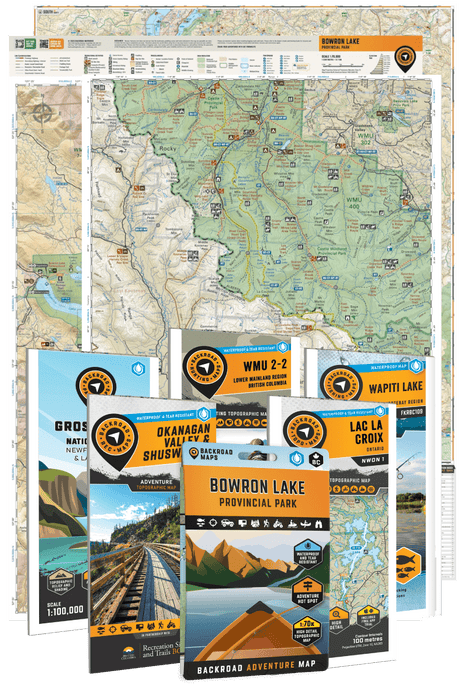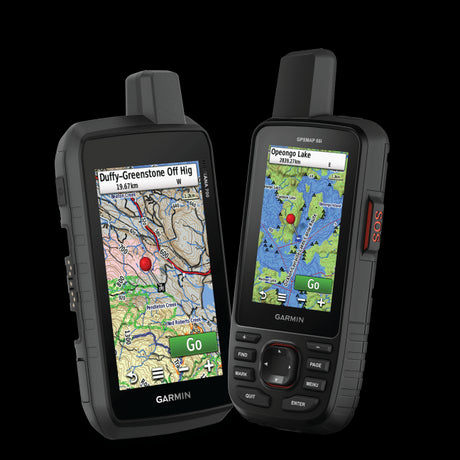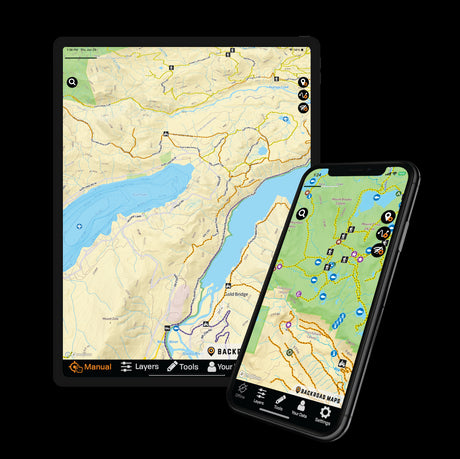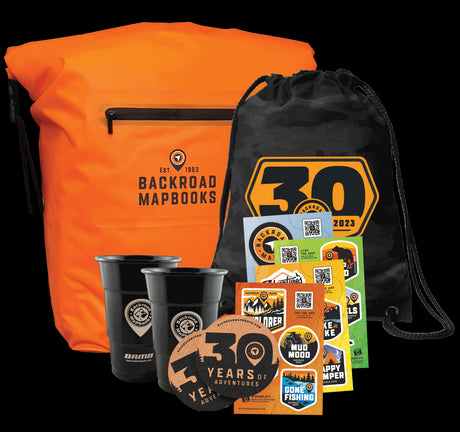Blog in collaboration with BC Marine Trails
The Cape Scott Marine Trail offers a rugged and exhilarating adventure for experienced kayakers, stretching from Port Hardy to Coal Harbour at the end of Quatsino Sound. Situated at the northern tip of Vancouver Island, where Queen Charlotte Sound meets the open Pacific Ocean, the Cape Scott Marine Trail immerses paddlers in some of the most untamed and breathtaking landscapes. Given the trail's complexity, big waves, strong winds, and extensive distances thorough planning is essential. However, those who undertake this journey will be rewarded with pristine white sand beaches, turquoise waters, and a diverse array of wildlife both in the sea and on land.
Explore the Cape Scott Marine Trail using the BC Marine Trails layer on the BRMB Maps App and access detailed information about all the launch and landing sites.

Recent developments along the trail include the creation of several new marine campsites and significant infrastructure improvements, achieved through collaboration with the Quatsino First Nation. These enhancements are aimed at increasing safety and accessibility, though some gaps in site availability still need to be addressed. The northern section of the trail shares campsites with the land-based North Coast Trail offering a chance to meet up with hikers along the way.
The Rocky Start
The counter-clockwise route from Port Hardy is the most popular to take advantage of prevailing Northwesterly winds on the Pacific side. Launch near the government dock in Port Hardy or hire a water taxi to take you further up the east shoreline to shorten the route. Navigating the rocky east side with its hidden barnacles and rocks requires careful attention, especially around points and in shallow bays at low tide.

Shuttleworth Bight: Big Beaches and Surf Conditions
As you approach Shuttleworth Bight, the landscape shifts to expansive, stunning white sand beaches. Despite the seemingly gentle low-gradient sand, don't be fooled: wind and waves can quickly generate surf conditions even within the more sheltered areas and rocks are prevalent beyond the shoreline. Exercise caution and remain vigilant to ensure a safe and pleasant experience as you navigate these picturesque yet potentially challenging beaches.

Navigating the Cape
The cape is connected to Vancouver Island by a tombolo, positioning the campsites at Experiment Bight and Guise Bay approximately 500 meters apart by land but nearly 4 nautical miles by sea.
To safely navigate around the cape, plan your passage for slack tide and, if possible, high tide when most rocks are submerged. Spotting the lighthouse from the water can be challenging as it sits high on a hill on the east side. A large standing wave often forms off the point below the lighthouse, and numerous submerged shoals and rocks are around the entire cape so it’s advisable to navigate near slack tide and in favorable wind conditions. For a breathtaking view and a closer look at the lighthouse, consider hiking the trail from Guise Bay.



The West Coast
Upon reaching the west coast, the real adventure begins. This section is known for its dynamic conditions, including rips and rogue waves, there are few emergency pull-outs so stay alert. Lowrie Bay offers a fantastic opportunity for rest and some fun surfing practice.
If you wish to shorten your trip, you can pull into San Josef Bay and arrange a ride back to Port Hardy with the hikers, making this option a practical solution for retrieving your vehicle. Note that the bus service does not accommodate kayaks.

San Josef Bay to Quatsino Sound
The stretch between San Josef Bay and Quatsino Sound is marked by dramatic cliffs and powerful waves, with limited emergency pull-out options. Despite the rugged conditions, several well-situated campsites offer safe access points and protection from the surf. These sites provide a crucial respite and are essential for managing the challenging coastal environment.

The Final Stretch
As you approach the entrance to Quatsino Sound, you’ll encounter another lighthouse, marking a key point in your journey. The final challenge involves navigating Quatsino Narrows, which requires careful timing and is best tackled at slack tide for a safe passage. There are several campsites within the Sound to allow you to wait for the right time.
To complete your trip efficiently, consider leaving a vehicle at Coal Harbour before heading to Port Hardy. It’s a straightforward 20-minute drive back from Coal Harbour to Port Hardy, where you can retrieve your car from the launch point.

The Cape Scott Marine Trail offers a remarkable adventure for seasoned kayakers, blending the raw beauty of Vancouver Island’s northern coast with the challenges of its rugged conditions. From the initial launch in Port Hardy to the dramatic cliffs and surf of the west coast, every segment of the route presents unique and rewarding experiences. Navigating the rocky east side, enjoying the expansive beaches of Shuttleworth Bight, and managing the powerful waves near Quatsino Sound all demand skill and preparation.
The well-developed campsites and stunning scenery, including the dramatic Raft Cove and the lighthouse at Quatsino Narrows, ensure that the journey is as memorable as it is demanding. Whether you opt to complete the entire route or shorten your trip, the Cape Scott Marine Trail remains a testament to the striking natural beauty and adventurous spirit of British Columbia's coastal waters.
BC Marine Trails is a non-profit organization working with First Nations and stakeholders to build, protect and promote a public network of marine trails allowing safe recreational navigation of the BC Coastline with minimal impact on the environment.
Download the BRMB Maps app today to explore the BC Marine Trails (and much more!)
With the BRMB Maps PRO Plan, you can access to our full suite of Adventure Layers across Canada. Tailor your map experience by toggling layers on and off based on your outdoor interests.
Unlike other maps, BRMB Maps shows you all the essential outdoor features, including hiking and biking trails, campsites, fishing lakes and rivers, national and provincial parks, paddling routes, ATV and snowmobile trails, and much more. Our extensive road coverage spans highways, rural roads, logging and industry roads, deactivated roads, and unclassified backcountry roads.
Exclusive to Backroad Mapbooks, each Adventure POI is loaded with detailed written descriptions. Whether you’re exploring the wild BC Coast or the rugged shores of Newfoundland, our maps will guide you on the adventure of a lifetime.








